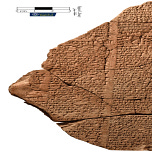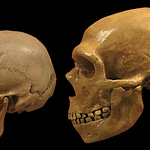The Hymn That Hid in Plain Sight
Clay tablets break easily. Empires fall, libraries burn, museums scatter, and scribes leave only fragments of the worlds they knew. Babylon was no exception.
So it is remarkable that a single hymn praising the city’s temples, its river-fed gardens, its women priests, and its welcoming ethos survived at all. More remarkable still is how it reemerged. Not from a sealed archive or a new dig, but from the digital ether.
Professor Enrique Jiménez, an Assyriologist at LMU Munich, has spent years building the Electronic Babylonian Library, a project that gathers images of cuneiform fragments from collections worldwide and trains artificial intelligence to match pieces like a cosmic jigsaw puzzle.

In 2023, one of those matches revealed a long-lost hymn composed around 1000 BCE. The text had lain dormant across multiple clay tablets for millennia, unnoticed even by specialists. Once stitched together,1 the hymn reshaped scholars’ understanding of Babylonian literary culture.
“The rediscovered hymn suggests a civic identity that was celebrated, taught, and preserved through school exercises,” says Dr. Nevin Al-Hassan, a Near Eastern philologist at Leiden University. “It reveals a Babylon that understood itself as more than a political center. It was a place where ideals were cultivated.”
This was not the typical Akkadian royal propaganda, nor was it a temple ritual text. It was something closer to a civic love poem.
And schoolchildren were the ones copying it.
Listen to this episode with a 7-day free trial
Subscribe to Anthropology.net to listen to this post and get 7 days of free access to the full post archives.








